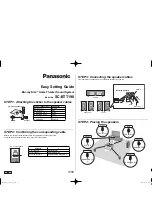
1
Magnetic Contact Detectors
The Magnetic contact comprises two parts; a Detector and a Magnet. They are designed to be fitted
to doors or windows with the Magnet mounted on the opening part and the Detector mounted on the
fixed frame. Opening the protected door/window will remove the magnetic field, trigger the Detector
and generate an alarm condition, (if the system is armed).
The Detector is powered by two CR03 type Lithium cells which under normal conditions will
have an expected life of up to 1 year. Under normal battery conditions the LED on the Detector will
not illuminate when the Detector is triggered, (unless in test mode). However, under low-battery
conditions this LED will be illuminated for approx. 1 second when the detector is triggered. When this
occurs the batteries should be replaced as soon as possible.
The Magnetic Contact Detector has the facility to connect an additional wired Magnetic Contact. This
additional contact must be of a normally closed contact type with the contacts being opened in order
to generate an alarm condition.
Positioning the Magnetic Contact Detector
The Magnetic Contact Detector is suitable for mounting in dry interior locations only.
Decide which doors/windows are to be protected by Magnetic Contact Detectors, (as a minimum
usually the front and back doors will have Magnetic Contact Detectors fitted). Additional detectors
may also be added where required to other vulnerable doors or windows, (e.g. garage, patio/
conservatory doors etc).
Ensure that the position selected for the Magnetic Contact Detector is within effective range of the
Siren.
Note:
Take care when fixing the Detector to a metal frame, or mounting within 1 metre of metalwork
(i.e. radiators, water pipes, etc) as this could affect the radio range of the device. If required, it may be
necessary to space the Magnet and Detector away from the metal surface using a plastic or wooden
spacer to achieve the necessary radio range.
Installing and Configuring the Magnetic Contact Detector
Ensure that the system is in Service Mode
1. Remove the battery cover by sliding and lifting it off. (DO NOT use a screwdriver to lever the cover
off).
. Remove the battery holder by carefully tilting up the end and pulling the connector off the printed
circuit board.













































